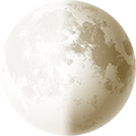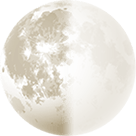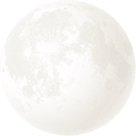What's up in the night sky this November? (2022)What to see in Novembers night sky including Moon phases, a total lunar eclipse, planet guide, Taurid and Leonid meteor showers and deep space objects in Orion, the great nebula as well as M78, horsehead and flame nebulas.
November Moon Phases
November's full moon is called the Frost moon, as this is typically when the first frosts of the year appear. Other names include the beaver moon.
Full Moon and New Moon for October 2022

October 2022 First QuarterMon 3rd Oct

October 2022 Full MoonMon 10th Oct

October 2022 Last QuarterTue 18th Oct

October 2022 New MoonWed 26th Oct
Notable Events in November
A total lunar eclipse will be visible from eastern Russia, Japan, Australia, the Pacific Ocean, and parts of western and central North America. A total lunar eclipse is when the Moon passes completely through the Earth's dark shadow or umbra. During this type of eclipse, the Moon will gradually get darker and then take on a rusty or blood-red colour. NASA Map and Eclipse Information .
November Planets
Jupiter is a splendid object visible in the southern sky as soon as darkness falls. Using higher magnifications you will see the yellowish flattened disc and the four Galilean satellites. You should be able to follow the movement of these moons from night to night. It will be visible in the mornings from January to May, evenings from May to November, and mornings again from mid-December to the end of December.
Saturn is visible in the mornings from late January to early July, and then in the evenings from July to December.
November Meteor Showers
The Taurids is a long-running minor meteor shower producing only about 5-10 meteors per hour. It is unusual in that it consists of two separate streams. The first is produced by dust grains left behind by Asteroid 2004 TG10. The second stream is produced by debris left behind by Comet 2P Encke. The shower runs annually from September 7 to December 10. It peaks this year on the night of November 4. This year the nearly full moon will block out all but the brightest meteors. But if you are patient, you may still be able to catch a few good ones. The best viewing will be just after midnight from a dark location far away from city lights. Meteors will radiate from the constellation Taurus, but can appear anywhere in the sky.

The Leonids is an average shower, producing an average of up to 15 meteors per hour at its peak. This shower is unique in that it has a cyclonic peak about every 33 years where hundreds of meteors per hour can be seen. The last of these occurred in 2001. The Leonids are produced by dust grains left behind by comet Tempel-Tuttle, which was discovered in 1865. The shower runs annually from November 6-30. It peaks this year on the night of the 17th and the morning of the 18th. The second quarter moon will block many of the fainter meteors this year. But the Leonids can be unpredictable so there is still potential for a good show. The best viewing will be from a dark location after midnight. Meteors will radiate from the constellation Leo, but can appear anywhere in the sky.

November Deep Space Objects
The Orion Nebula (M42 and M43) are prime targets in the winter months hanging in the South Eastern sky. They are easy to locate as they form the sword hanging from Orion's Belt.
M78 is a reflection of Nebula in Orion which is often overlooked. M78 is the brightest diffuse reflection nebula in the sky. The nebula can easily be seen in large binoculars and small telescopes, which show a hazy, comet-like patch of light with two 10th-magnitude stars that illuminate it. 4-inch telescopes will sometimes reveal the haze around M78 and also show the nearby reflection nebula NGC 2071 under good conditions. 8-inch telescopes begin to show the details of M78.

The nebula is pretty easy to find as it is located only about 2 degrees north of Alnitak, the easternmost star of Orion's Belt.
Alnitak has two other prominent nebulae associated with it - the Horsehead Nebula and the Flame Nebula. M78 is a bit further away from the star than these two.
The horsehead nebula sits just to the east of NGC 2023 towards the double star Sigma Orionis and the flame nebula to the west of Alnitak.









